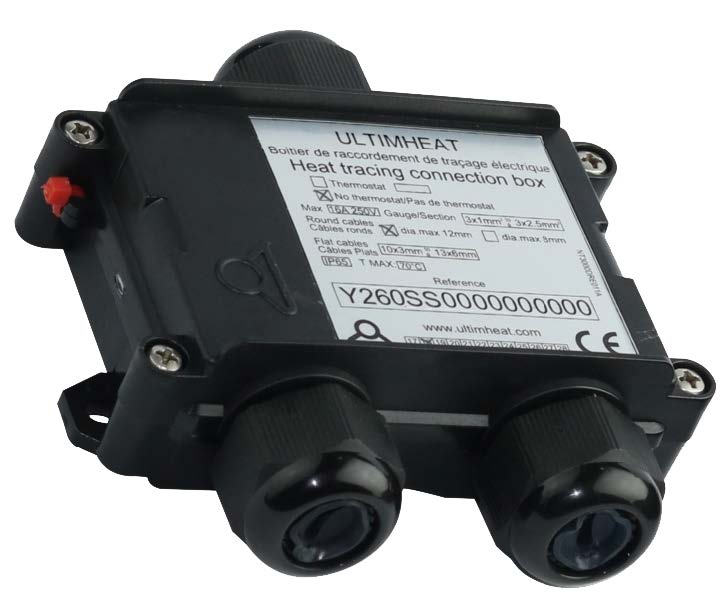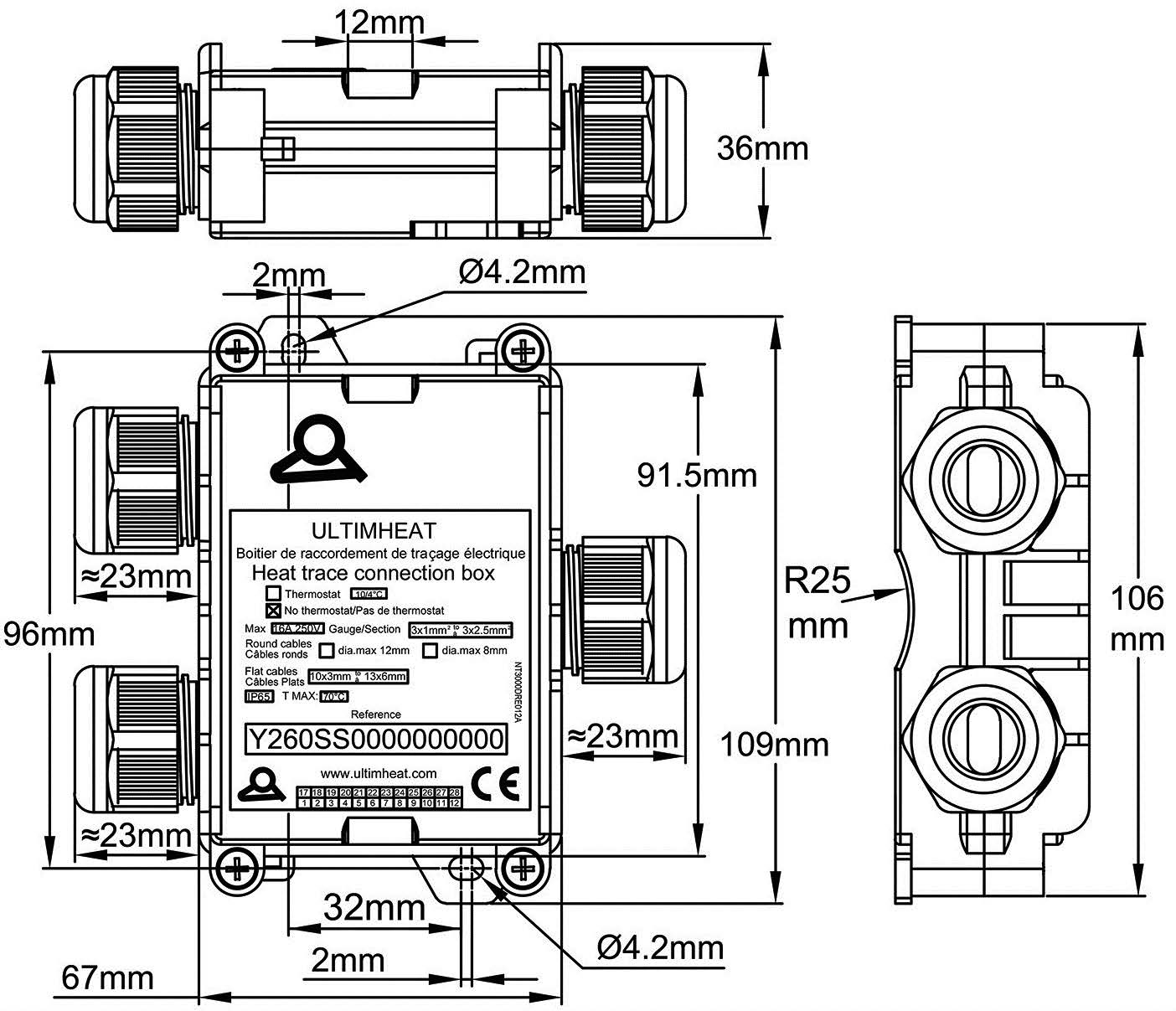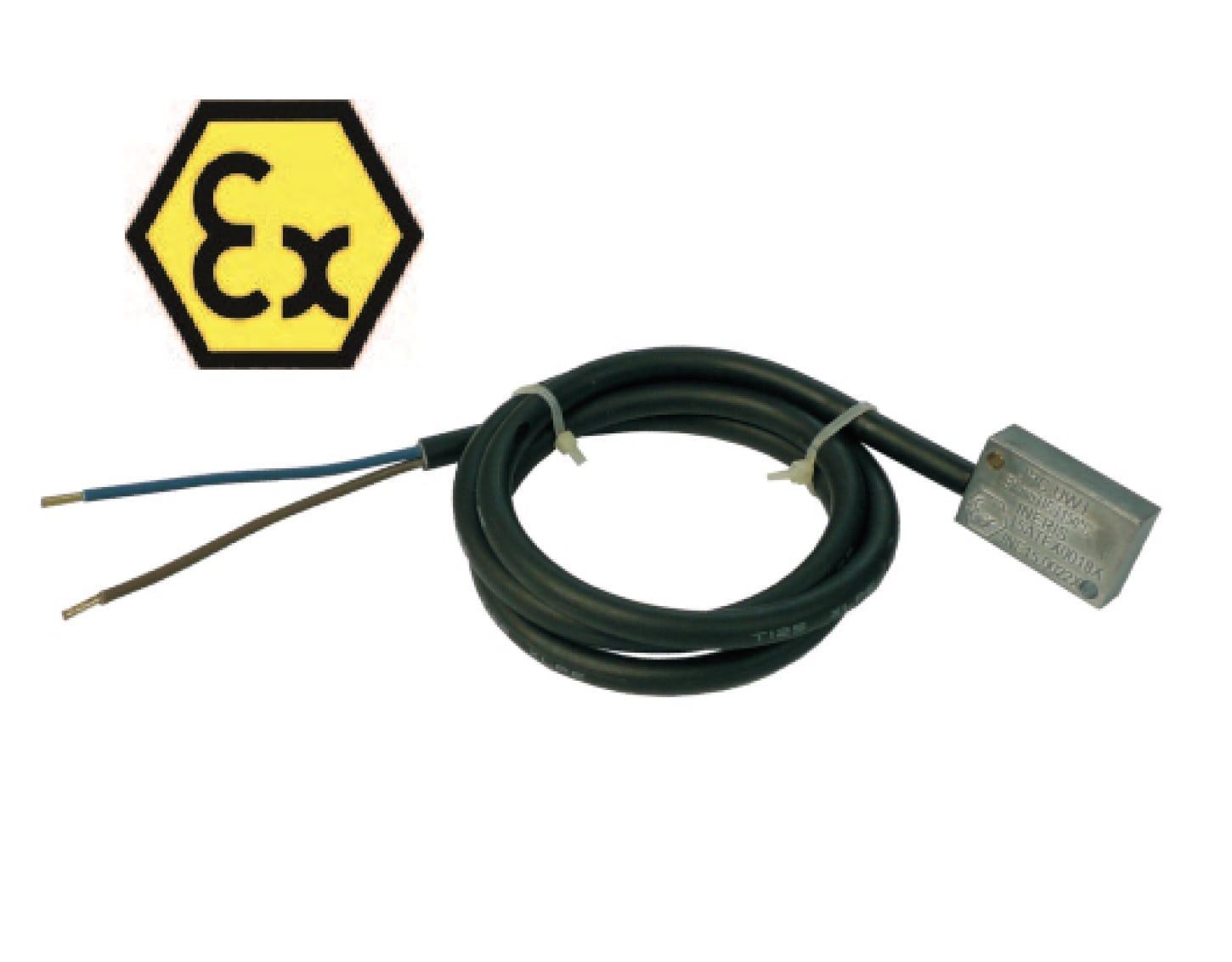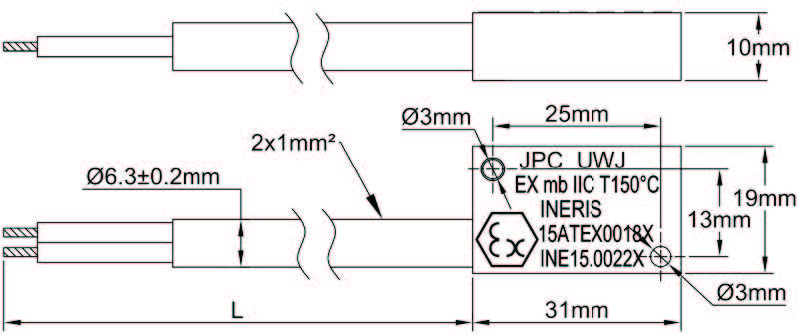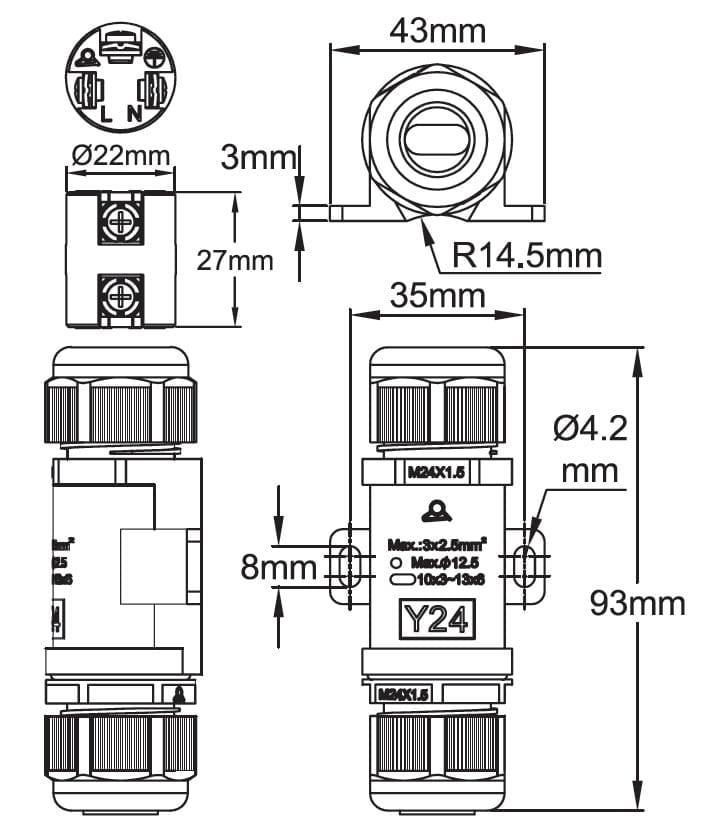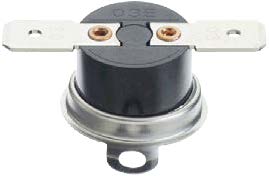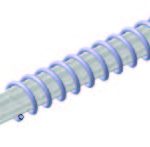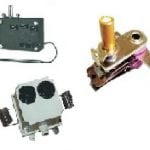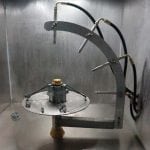Technical over-molding of thermostats
Thanks to the special process developed in our laboratories, low temperature Polyamide 66 injection molding does not overheat the disc of the thermostat, (Avoiding in this way the set point temperature drift with this operation usually brings), nor the conductor insulation.
Connecting thermostats to wires or cables is the most critical point in regard to the mechanical strength and resistance to water penetration.
Over-molding improves the mechanical strength of the assembly and provides a good ingress protection to water.
Thanks to the special process developed in our laboratories, low temperature Polyamide 66 injection molding does not overheat the disc of the thermostat, (Avoiding in this way the set point temperature drift with this operation usually brings), nor the conductor insulation.
Over-molded thermostat on heat tracing cable, type 49C
 |
 |
Technical features
The assembly is waterproof, frost proof, short immersion proof, protects the connection of the power cord to the heating cable. The flexibility of the over-molding is compatible with the heating cable. The free end of the heating cable receives also an over-molding to make it waterproof.
This type of assembly is cost saving, but requires M.O.Q of 500 pieces.
The designs and quotations of this product are only made on the basis of customer’s specs, and depend on the dimensions of the heating wire (diameter, length, power), and type, gauge and length of the cord.
Defrost termination over-molded thermostat type 49JE
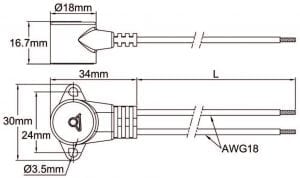 |
 |
Technical features
The assembly is waterproof, frost proof, short immersion proof, protects the connection of the power cord to the thermostat, protects the thermostat housing and is terminate the defrost when the temperature rise to a warm temperature. The thermostat is mounted on a heat exchanger or on a pipe, with its sensitive disc located thereon. He is secured there with a spring or with a bracket.
The temperature sensitive cup is made in stainless steel and is not covered by the over-molding, to optimize the temperature measurement and the response time.
This type of assembly is cost saving, but requires M.O.Q of 500 pieces.
The designs and quotations of this product are only made on the basis of customer’s specs, and depend on the thermostat open and close temperatures, and type, gauge and length of the cord.
Over-molded junction between cord and heat tracing cable, type 9DHT
 |
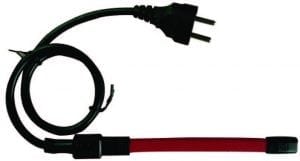 |
Technical features
The assembly is waterproof, frost proof, short immersion proof, protects the connection of the power cord to the heating cable. The flexibility of the over-molding is compatible with the heating cable. The free end of the heating cable receives also an over-molding to make it waterproof.
This type of assembly is cost saving, but requires M.O.Q of 500 pieces.
The designs and quotations of this product are only made on the basis of customer’s specs, and depend on the dimensions of the heating wire (diameter, length, power), and type, gauge and length of the cord.
Downloads
datasheet
Related products
Accessories for immersion heaters
Room and antifreeze temperature control boxes
T connection box for heat tracing cables with antifreeze thermostat
Disc temperature limiters
Connection blocks
Room and antifreeze temperature control boxes
Fixed setting ambiance or antifreeze thermostat, IP65 backside output, without pilot light
Technical informations associated to this product
-
Heat tracing applications
To reflect the maximum temperatures allowed by the insulating polymers, the powers of flexible heating cables are generally between 5 and 30W/meter, exceptionally 40W/m and 60W/m for self-regulating cables. -
Thermostats types
It is currently the thermostats family where quantities are the most important. Numerous configurations exist, and the current trend is simplification and footprint reduction. -
Electrical protection classes
The housings are designed to protect electrical equipment located inside. This protection must be considered in the electrical and environmental angles.) -
Temperature control modes
While thermostats typically operate only in the on/off mode, the electronic controllers can regulate in two main modes: on/off with adjustable differential or PID.




